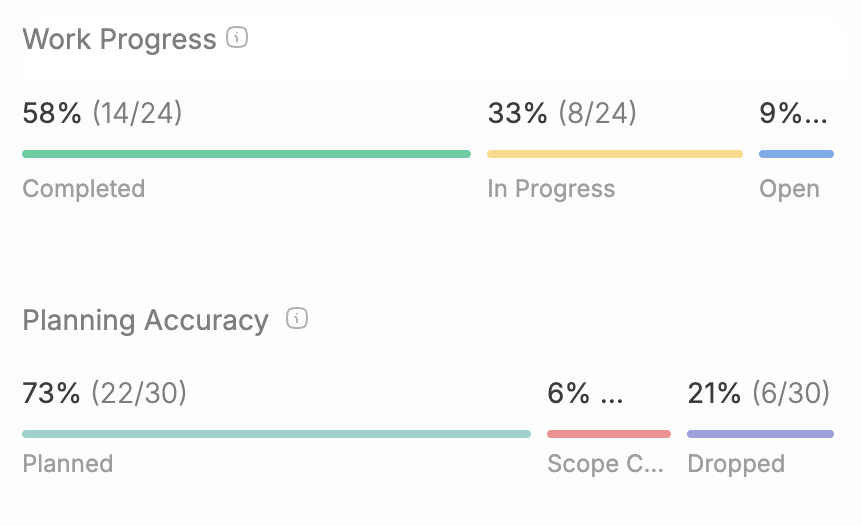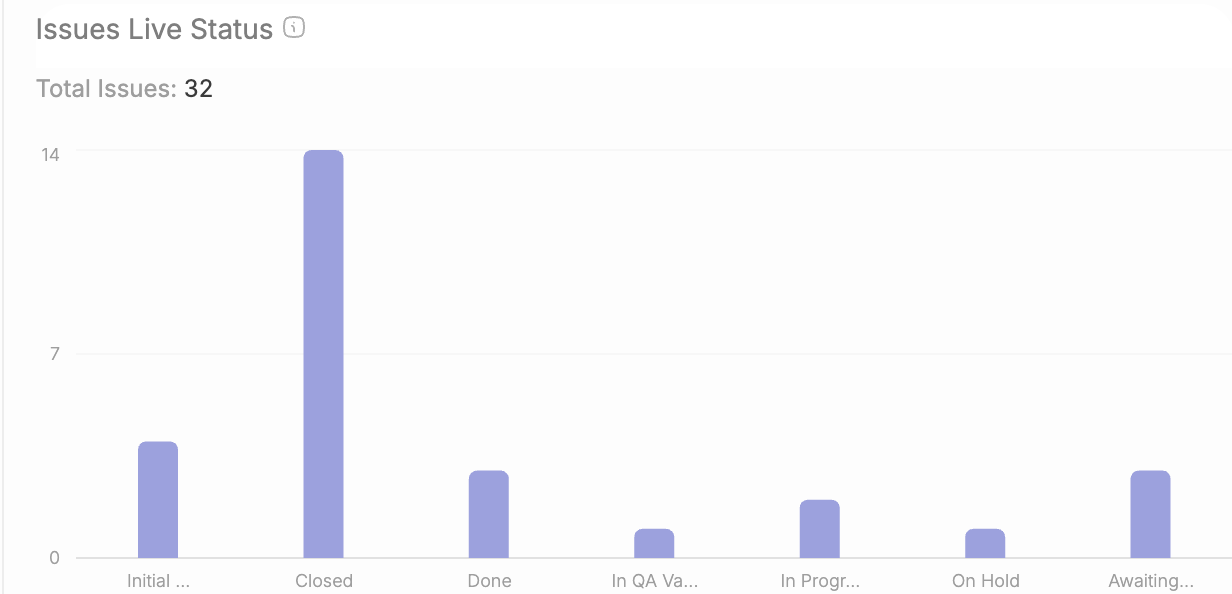Sprint Review Meetings are a cornerstone of Agile and Scrum methodologies, serving as a crucial touchpoint for teams to showcase their progress, gather feedback, and align on the next steps. A sprint review is a working session held at the end of each sprint, providing an opportunity to evaluate progress and plan ahead. However, many teams struggle to make the most of these meetings. This blog will explore how to enhance your Sprint Review Meetings to ensure they are effective, engaging, and productive.
The Sprint Review Meetings are meant to evaluate the progress made during a sprint, review the completed work, collect stakeholder feedback, and discuss the upcoming sprints. The purpose of the sprint is to deliver value and achieve specific goals, and understanding the intended purpose of the Sprint Review helps align the team and stakeholders toward maximizing product value. Sprint reviews help ensure that short-term work is still serving the bigger product vision, keeping the team aligned with long-term objectives. Setting clear expectations for the meeting ensures that all participants understand what is to be achieved and helps keep the discussion focused. Key participants include the Scrum team, the Product Owner, key stakeholders, senior stakeholders—whose involvement is valuable because they can provide strategic feedback and influence project direction—and occasionally the Scrum Master. It is important to explain the objectives and expectations at the start of the meeting so everyone is aligned.
It’s important to differentiate Sprint Reviews from Sprint Retrospectives. While the former focuses on what was achieved and gathering feedback, the latter centers on process improvements and team dynamics.
Preparation can make or break a Sprint Review Meeting. Ensuring that the team is ready involves several steps. Holding a dry run or practice session before the actual sprint review can help ensure that everything runs smoothly and all participants are comfortable with their roles during the meeting.
Encouraging direct collaboration between stakeholders and teams is essential for the success of any project. Fostering interactive conversations and stakeholder engagement ensures that all perspectives are heard and valued throughout the process.
This means avoiding the use of excessive technical jargon, which can make non-technical stakeholders feel excluded. Instead, strive to facilitate clear and transparent communication that allows all voices to be heard and valued. Discussing outcomes and product performance through collaborative conversation helps drive continuous improvement. Providing a platform for open and honest feedback will ensure that everyone’s perspectives are considered, leading to a more inclusive and effective collaborative process.
It is crucial to have a clearly defined agenda for a productive Sprint Review. This includes sharing the agenda well in advance of the meeting, and clearly outlining the main topics of discussion. Clarifying expectations for the meeting at this stage helps ensure all participants are aligned and understand the objectives. Setting clear expectations and time boxes for each segment of the sprint review helps keep discussions focused and prevents the meeting from running overtime. It’s also important to allocate specific time slots for each segment of the meeting to ensure that the review remains efficient.
The agenda should include discussions on completed work, work that was not completed, and the next steps to be taken. It should also cover reviewing progress and providing a clear overview of the product's status to enhance transparency and stakeholder understanding. Discussing challenges and risks transparently during sprint reviews allows stakeholders to understand the team's landscape and how they can assist. This level of detail and structure helps to ensure that the Sprint Review is focused and productive.
When you present completed work, it’s important to ensure that the demonstration is engaging and interactive. To achieve this, consider the following best practices:
By following these best practices, you can ensure that the demonstration of completed work is not only informative but also compelling and impactful for stakeholders.
Effective feedback collection is crucial for continuous improvement:
The Sprint Review Meeting is an important collaborative meeting where team members, engineering leaders, and stakeholders can review previous and discuss key pointers. Below are a few questions that need to be asked during this review meeting:
Use collaborative tools to improve the review process:
Using collaborative tools can also save time by streamlining the review process and making it easier for everyone to participate and stay informed.
Typo is a collaborative tool designed to enhance the efficiency and effectiveness of team meetings, including Sprint Review Meetings. The review becomes a working session that benefits from real-time data. Our sprint analysis feature uses data from Git and issue management tools to provide insights into how your team is working. You can see how long tasks take, how often they’re blocked, and where bottlenecks occur. It allows to track and analyze the team’s progress throughout a sprint and provides valuable insights into work progress, work breakup, team velocity, developer workload, and issue cycle time. This information can help you identify areas for improvement and ensure your team is on track to meet their goals.
Teams can adapt their use of tools and processes based on feedback and evolving needs to continuously improve the sprint review process.
Work progress represents the percentage breakdown of issue tickets or story points in the selected sprint according to their current workflow status.
Planning Accuracy measures how closely a sprint follows its original plan. It reflects the percentage of story points or issues that were planned before the sprint began versus those that were added or removed after the sprint started.

Team Velocity represents the average number of completed issue tickets or story points across each sprint.

Developer workload represents the count of issue tickets or story points completed by each developer against the total issue tickets/story points assigned to them in the current sprint.

It represents how many tickets are stuck at what stages and their ageing graphs.

A Burndown Chart shows the actual and estimated amount of work to be done in a sprint. The horizontal x-axis in a Burndown Chart indicates time, and the vertical y-axis indicates story points.

Scope creep is one of the common project management risks. It represents the new project requirements that are added to a project beyond what was originally planned.
Creating and sharing detailed agendas with all meeting participants ahead of time is essential for effective Sprint Review Meetings. To set a productive agenda, consider including the following key points:
Sharing the agenda in advance ensures everyone knows what to expect and can prepare accordingly.
Enhance sprint review meetings by enabling real-time collaboration and providing comprehensive metrics to the scrum team. Access to live data and interactive dashboards ensures the team has the most current information and can engage in dynamic discussions. Key metrics such as velocity, issue tracking, and cycle time provide valuable insights into team performance and workflow efficiency. This transparency and data-driven approach facilitate informed decision-making, improve accountability, and support continuous improvement, making sprint reviews more productive and collaborative.
Make it easy to collect, organize, and prioritize valuable feedback from stakeholders. Utilize feedback forms or surveys to gather structured input during or after the meeting. Real-time documentation of feedback ensures that no valuable insights are lost. Additionally, categorizing and tagging feedback can help with easier tracking and action planning.
Use presentation tools to enhance the demonstration of completed work. Incorporate charts, graphs, and other visual aids to make progress more understandable and engaging. Interactive elements can allow stakeholders to explore new features hands-on, increasing engagement and comprehension.
Drive continuous improvement in Sprint Review Meetings by analyzing feedback trends, identifying recurring issues or areas for improvement, encouraging team members to reflect on past meetings and suggest enhancements, and implementing data-driven insights to make each Sprint Review more effective than the last.
A well-executed Sprint Review Meeting can significantly enhance your team’s productivity and alignment with stakeholders. A successful sprint review focuses on delivering business value and ensures the team is moving in the right direction toward project goals and the overarching product goal. Celebrating achievements during sprint reviews boosts morale and motivates the team for future challenges. By focusing on preparation, effective communication, structured agendas, interactive demos, and continuous improvement, you can transform your Sprint Reviews into a powerful tool for success. Clear goals should be established at the outset of each meeting to provide direction and focus for the team.
Remember, most sprint reviews fail to deliver more value because they become ineffective sprint reviews focused only on outputs rather than outcomes. The key is to foster a collaborative environment where valuable feedback is provided and acted upon, driving your team toward continuous improvement and excellence. It is important to align each review with product goals and ensure every session has a clear point that drives improvement. Integrating tools like Typo can provide the structure and capabilities needed to elevate your Sprint Review Meetings, ensuring they are both efficient and impactful.
Additionally, Typo’s AI-generated Sprint Retrospectives offer an objective review of meetings by automatically analyzing discussion points and feedback. This feature saves teams hours of preparation by generating comprehensive retro documents that highlight key insights, action items, and areas for improvement. By leveraging AI, teams can focus more on meaningful reflection and less on administrative tasks, making retrospectives more effective and efficient.

Remember, most sprint reviews fail to deliver more value because they become ineffective sprint reviews focused only on outputs rather than outcomes. The key is to foster a collaborative environment where valuable feedback is provided and acted upon, driving your team toward continuous improvement and excellence. It is important to align each review with product goals and ensure every session has a clear point that drives improvement. Integrating tools like Typo can provide the structure and capabilities needed to elevate your Sprint Review Meetings, ensuring they are both efficient and impactful.